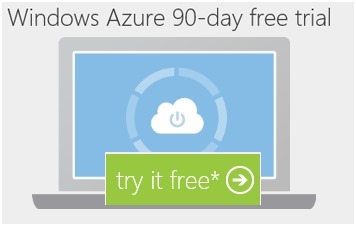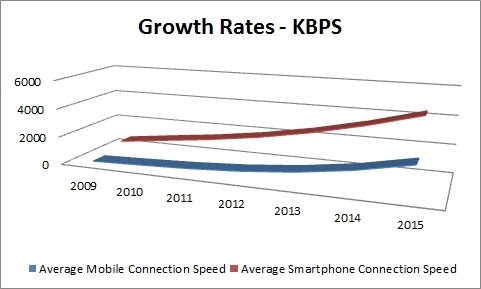Presentation–How to introduce Cloud and Mobile Development
| Introduction – How to speak to Cloud and Mobile Development |
| This slide deck is based on a talk I did at OpenAndroid in San Francisco. The purpose of this post is to replay the talking points. I will discuss one of the big influences on pushing cloud computing forward - mobile computing. The actual slide deck is at the end of this post. |
| What to expect from this talk |
| There is a lot of evidence that mobile is driving the need for elastic resources. Popular apps can easily have millions of users. The cloud here is to support and scale mobile traffic. Architectures are needed that help mobile devices leverage cloud resources. Companies and startups are faced with the prospect of having to write 3 versions of mobile applications, supporting iOS, Android, and Windows Phone 7. At a minimum, cloud resources need to be available to any device. Open standard web services are needed to be available to divergent mobile platforms. This post is part of a larger series that illustrate how to build Azure-hosted RESTful web services. |
| Pew Research / Cisco Study |
| There are many sources of research. The Pew Research center is one place to get some interesting numbers. Cisco recently released a big study about global internet usage patterns. |
| IT is Changing |
These numbers are quite interesting. Mobile devices will be capable of so much more than today. Better speeds, more applications, more form factors will move the mobile industry dramatically forward, given this rate of innovation and growth.
|
| Todays Mobile device has 256,000,000 bytes of RAM The Apollo Spacecraft had 4,096 bytes of erasable memory |
| 75 of these M.I.T. Apollo Guidance Computer were created. These computers were used during space missions to the moon. There were restart buttons, even then |
| It is about the apps |
The trend is clearly about running specialized apps on mobile devices. There are countless mobile applications available to purchase or install for free from multiple mobile application marketplaces. Apple, Google, and Microsoft all have marketplaces where you can buy mobile applications. It turns out, however, that the languages and tools are all radically different for each vendor. While there are some transferable skills, most are not – the developer is faced with learning Objective-C, Java, and C#, or Visual Basic. Code demos that accompany this presentation will illustrate an app of each type being created. The code demos also demonstrate the building of a RESTful service, powered by Microsoft Cloud Offering, Windows Azure.
|
| 1 in 4 adults in the US uses apps |
| Companies and startups are scrambling to best understand how to monetize this craze around mobile applications. There are every conceivable type of application available. Many offerings are absolutely free and make their money through advertising. The amount of money spent on apps is expected to grow to incredible heights. Gartner expects a trillion dollar industry by 2014. https://www.gartner.com/it/page.jsp?id=1455314 There are a wide range of additional services related to mobile applications, such as context, advertising, application and service sales, and so on. Each of these will be a significant business worth several tens of billions of dollars per year. |
| Daily use means your cloud offering better have an SLA |
| Uptime and the replication of data is critical. Durability of customer data is paramount. Mobile users are relying on your application performance on a daily basis. |
| Social Networks Also Push the Cloud |
If you look at various social sites, including LinkedIn, Twitter, and MySpace, you also have scenarios where elastic scale is needed. As more and more business leverage user profile targeted marketing techniques, content can go viral. A business needs to be able to scale services if a promotional giveaway results in heavy traffic.
|
| Conclusion |
The purpose of this slide deck is get you thinking about scale. Skeptics to cloud computing should easily be able to see that the cloud is here to stay. The cloud will need to grow and evolve to meet the needs of mobile developers. This post is connected to a much larger group of posts that show you how to build RESTful services using Visual Studio and Windows Azure. This series also uses Eclipse and Xcode to build Android and iOS applications. This series programs in C#, Java, and Objective-C. Video tutorials are also available.
 |
![Slide1[4] Slide1[4]](https://msdntnarchive.blob.core.windows.net/media/MSDNBlogsFS/prod.evol.blogs.msdn.com/CommunityServer.Blogs.Components.WeblogFiles/00/00/01/13/13/metablogapi/5621.Slide14_thumb_08EA404A.jpg)
![Slide2[4] Slide2[4]](https://msdntnarchive.blob.core.windows.net/media/MSDNBlogsFS/prod.evol.blogs.msdn.com/CommunityServer.Blogs.Components.WeblogFiles/00/00/01/13/13/metablogapi/0728.Slide24_thumb_5E4E5F6C.jpg)
![Slide3[4] Slide3[4]](https://msdntnarchive.blob.core.windows.net/media/MSDNBlogsFS/prod.evol.blogs.msdn.com/CommunityServer.Blogs.Components.WeblogFiles/00/00/01/13/13/metablogapi/0081.Slide34_thumb_60C76B5D.jpg)
![Slide4[4] Slide4[4]](https://msdntnarchive.blob.core.windows.net/media/MSDNBlogsFS/prod.evol.blogs.msdn.com/CommunityServer.Blogs.Components.WeblogFiles/00/00/01/13/13/metablogapi/8726.Slide44_thumb_2A95CD41.jpg)


![Slide5[4] Slide5[4]](https://msdntnarchive.blob.core.windows.net/media/MSDNBlogsFS/prod.evol.blogs.msdn.com/CommunityServer.Blogs.Components.WeblogFiles/00/00/01/13/13/metablogapi/0508.Slide54_thumb_051861AE.jpg)
![Slide6[4] Slide6[4]](https://msdntnarchive.blob.core.windows.net/media/MSDNBlogsFS/prod.evol.blogs.msdn.com/CommunityServer.Blogs.Components.WeblogFiles/00/00/01/13/13/metablogapi/2161.Slide64_thumb_67E293D6.jpg)
![Slide7[4] Slide7[4]](https://msdntnarchive.blob.core.windows.net/media/MSDNBlogsFS/prod.evol.blogs.msdn.com/CommunityServer.Blogs.Components.WeblogFiles/00/00/01/13/13/metablogapi/0160.Slide74_thumb_72BF751E.jpg)
![Slide11[4] Slide11[4]](https://msdntnarchive.blob.core.windows.net/media/MSDNBlogsFS/prod.evol.blogs.msdn.com/CommunityServer.Blogs.Components.WeblogFiles/00/00/01/13/13/metablogapi/5850.Slide114_thumb_0CEFB876.jpg)